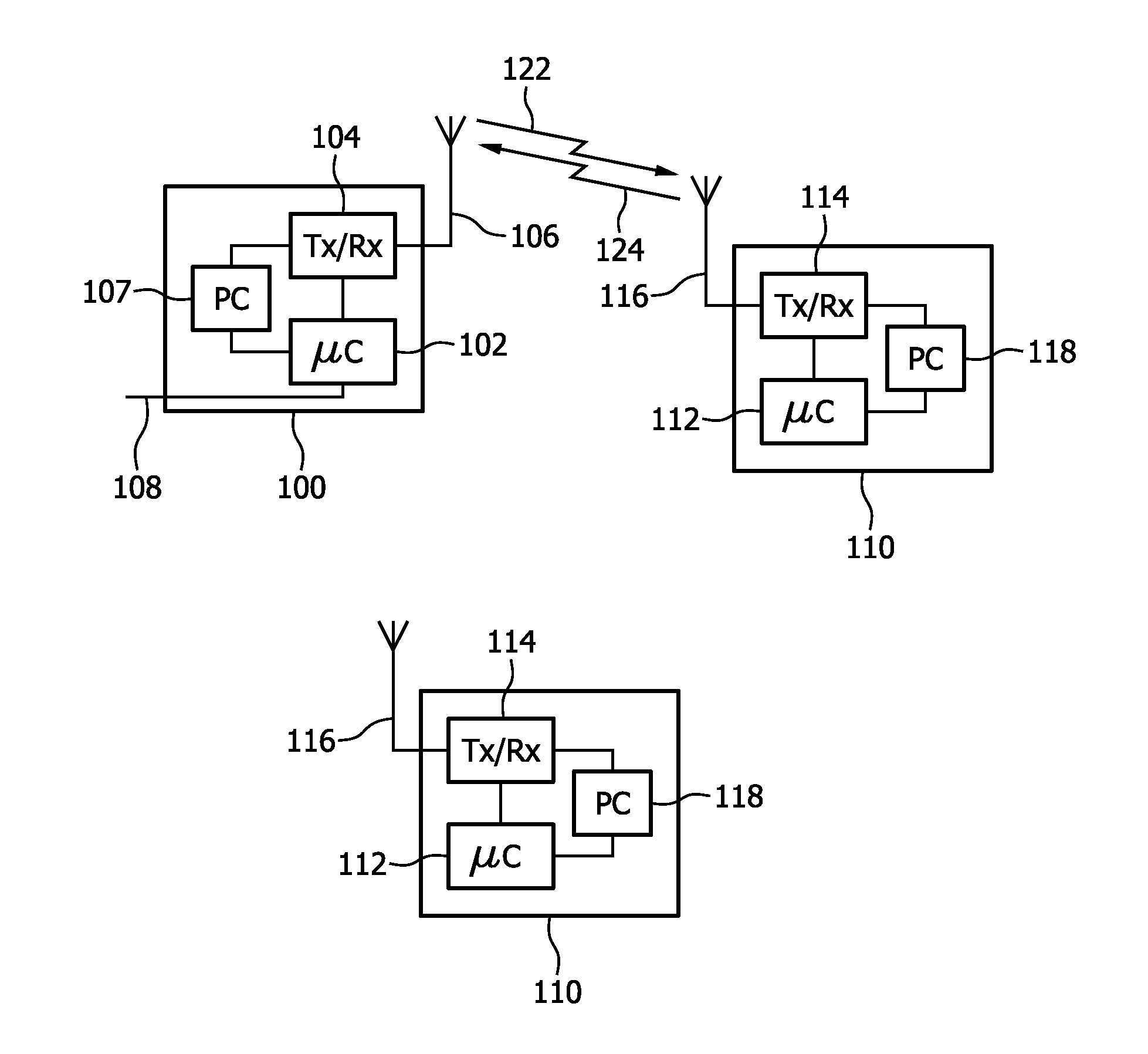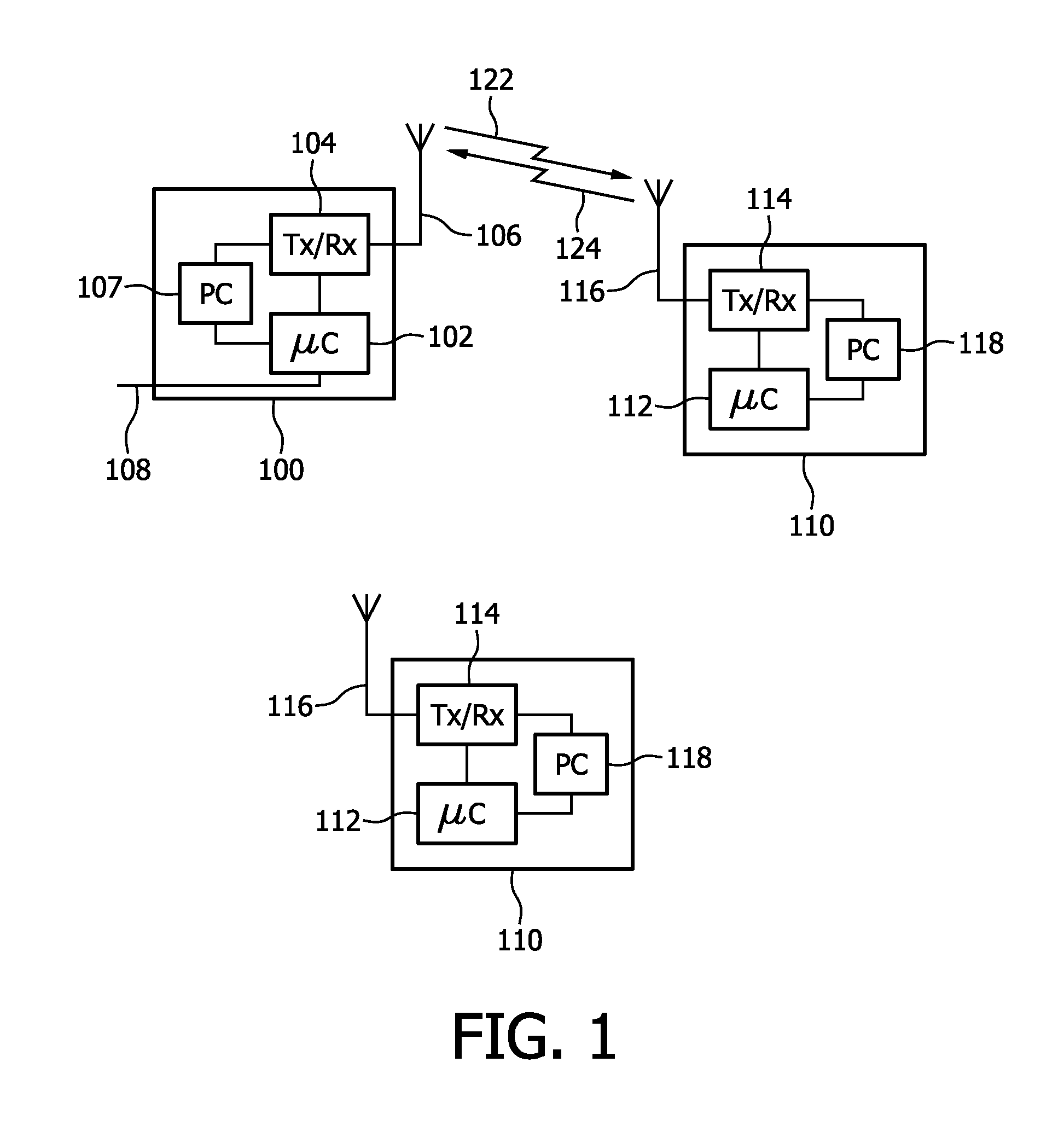Method for communicating in a mobile network
a mobile network and communication method technology, applied in the direction of payload allocation, transmission path sub-channel allocation, digital transmission, etc., can solve the problems of prohibitive processing complexity, limit the availability of suitable aggregations, and reduce the search space of control channel schemes
- Summary
- Abstract
- Description
- Claims
- Application Information
AI Technical Summary
Benefits of technology
Problems solved by technology
Method used
Image
Examples
fourth embodiment
A fourth embodiment is like the second embodiment, but with 5 carriers in UL and 3 carriers in DL. The search space on the non-anchor carriers is modified compared with the search space on the anchor carrier (carrier 0) but more blind decodings per carrier are allowed than in the third embodiment. For example on one additional carrier (Carrier 1) we could have:
Indicated UL Indicated DL carriercarrier (for (for PDCCH with PDCCHPDDCH with DL resourcepositionUL grant)allocation)011122230341
On the other additional carrier (Carrier 2) we could have:
Indicated UL Indicated DL carriercarrier (for (for PDCCH with PDCCHPDDCH with DL resourcepositionUL grant)allocation)011122230342
third embodiment
A fifth embodiment is like the third embodiment but where in order to give more flexibility the mapping between PDCCH position and carrier depends on the aggregation level. For aggregation level 1 we could have
Indicated UL Indicated DL carriercarrier offset offset (for PDCCH PDCCH(for PDDCHwith DL resourcepositionwith UL grant)allocation)00+11+10
For aggregation level 2 we could have
Indicated UL Indicated DL carriercarrier offset offset (for PDCCH PDCCH(for PDDCHwith DL resourcepositionwith UL grant)allocation)0−1+21+2−1
Part of the configuration of the mapping between PDDCH location may be fixed in the specification, for example as a default mapping in case no other mapping is signalled by higher layers.
Note that the PDCCH positions in the tables above are within the search space for a particular UE, which in general is located within a larger set of possible PDDCH locations
The invention may also be applied to indicate that the resources signalled in a PDCCH refer to another cell (wh...
PUM
 Login to View More
Login to View More Abstract
Description
Claims
Application Information
 Login to View More
Login to View More - R&D
- Intellectual Property
- Life Sciences
- Materials
- Tech Scout
- Unparalleled Data Quality
- Higher Quality Content
- 60% Fewer Hallucinations
Browse by: Latest US Patents, China's latest patents, Technical Efficacy Thesaurus, Application Domain, Technology Topic, Popular Technical Reports.
© 2025 PatSnap. All rights reserved.Legal|Privacy policy|Modern Slavery Act Transparency Statement|Sitemap|About US| Contact US: help@patsnap.com


